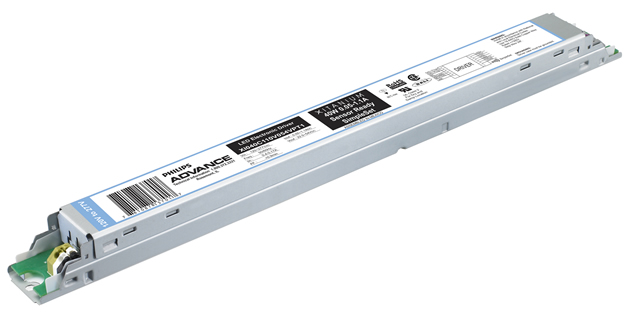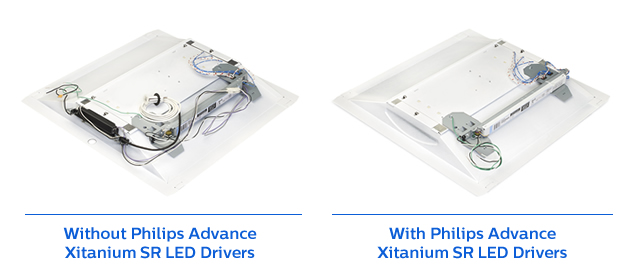The following blog post was written by Al Marble, Director -Product Management, LED Systems.
You can make a light fixture a wireless node today. It isn’t magic. The first question, however, should be: Does it make sense to make every fixture a wireless node?
There seems to be great benefit to having the granularity of knowing what happens at each light point. This became clear to me when I saw the “heat maps” generated by occupancy data…..basically showing the volume of traffic through space. I could then visualize many ways to benefit from using that data (energy savings, better space utilization, etc.). We can bet that lots of innovative and entrepreneurial companies will come up with many ways to use the data collected by these wireless points. This is Big Data, the “Internet of Things”.
 |
|
A Philips Advance Xitanium SR LED driver. (All Photo Credits: Philips) |
So if it makes sense to make every light fixture a wireless node, and if it is possible to do it today, what holds up progress? It boils down to it being too complex and costly. The Internet is waiting for lighting to catch up……our industry has some complexity and diversity that makes it difficult to change infrastructure overnight. But this should happen and Philips Advance LED Drivers will be a cornerstone of these wireless luminaires with the introduction of Philips Advance Xitanium SR LED Drivers.
If you walked through Lightfair this year, you likely saw the unveiling of Xitanium SR in the Philips booth. The concept is elegantly simple: Create an open standard interface between driver and sensor and bundle functionality appropriately into the driver. The intent is to reduce the complexity and cost to make every light fixture a wireless node by eliminating auxiliary components otherwise required. The open standard interface enables multiple sensor/network suppliers to easily tie in to the driver. The concept has been universally applauded and activities are well underway to bring compatible sensors to the market by co-development partners.
Reduce Complexity
Xitanium SR brings the following:
-
Open standard digital interface to connect to any suitable sensor.
-
Provides power to the sensor.
-
Captures power consumption of the light point.
-
Dim-to-off capability.
Ease of programming via SimpleSet wireless programming technology Xitanium SR is being introduced as a 40W LED Driver targeted for linear office applications. This is scheduled for release in December 2014 with a 75W companion scheduled for release in April 2015. Additional models for recessed downlighting and outdoor lighting will be released in the future.













